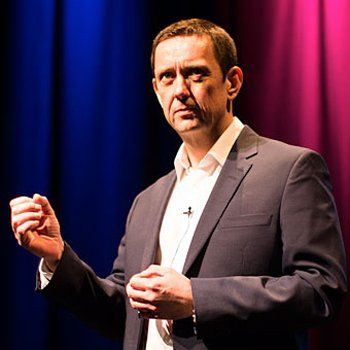Blog Layout
23 June 2021 / Alan Clayton
Home
/ News & Views
/ Charities, behaviour, and influence
Alan Clayton is speaking at Behavioural Design Fest, Crossbaskets Hotel, Glasgow on 14th October.
Charities are inherently emotional. Something is wrong and you want to fix it. Your organisation was founded in a flurry of excited passion and the early years were fast moving, exciting and made progress really quickly. Leadership and management were driven by inspiration.
Then something started to change. Your organisation got rational. Very rational. Too rational. Things started to slow down, get complicated, get even a little bit stuck. You started looking internally and started to spend all your leadership time on systems, measurements, procedures … and re-structures.
Every charity I have had the privilege of working with has been through this loop – at least once and some many times.
Trustees and executives often try the same approach – try to find structural solutions to cultural (or behavioural) problems. The whiteboard comes out and matrices, pyramids and onions are drawn. Audits are completed, gap analyses created, and competitor maps drawn.
These things are important. Rational thinking is important. Structure is important. But they are not everything.
Fundamentally our service users, advocates, campaigners, staff, volunteers, and donors are driven by emotion. My take on starting with behavioural design is the simplistic insight:
Emotion is why we do things. Rationality is why we do not do stupid things.
If you want to position your charity to grow your projects, services, and income, start with behaviour. This means starting with emotional engagement. Provide the emotional solution to the behavioural problem, then get the whiteboard out and start logically plotting how to align the parts for efficiency and effectiveness.
Your charity will fly when service users, staff, volunteers, and funders are all emotionally aligned. It takes expertise in the field of behavioural design to achieve this. Cultural change before structural change, not vice versa.
Notable success stories such as Aberlour (Scotland’s Children’s Charity), CHAS (Children’s Hospices Across Scotland), SCIAF (Scottish Catholic International Aid Foundation) and even RHASS (the Royal Agricultural Show Society of Scotland) have thrived taking this approach.
They all started with one thing: a focus which was:
1. Urgent
2. Simple
3. External
4. Ambitious
5. Inspiring
Why did they do this? Because emotions are:
1. Urgent
2. Simple
3. External
4. Ambitious
5. Inspiring
If the focus lines up with the emotional needs of stakeholder groups, then you have created the environment within which emotional alignment, and thus energy, unity, and action, can emerge.
The rational bit is part of the leader’s job. The emotional bit must be mastered to. This is behavioural design.
Here is a four-word summary:
Purpose, Passion, Performance, Productivity.
In that order.
As charities increasingly move into the influencing space, the behavioural design skill set has never been so important. Only when you are emotionally aligned can you start to influence client groups, the public, governments, institutions, and funders.
After all, they, like charities, are in the emotions business, too.

